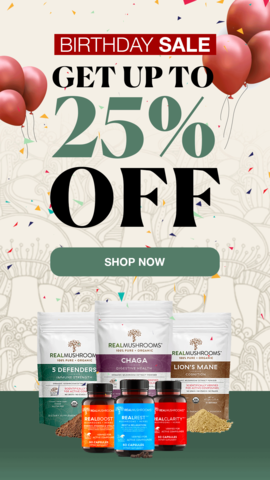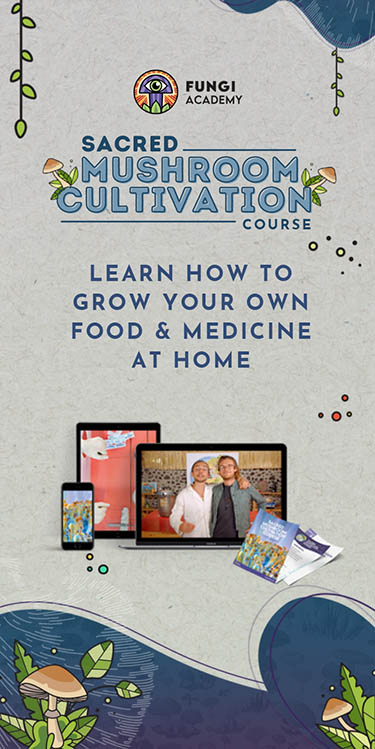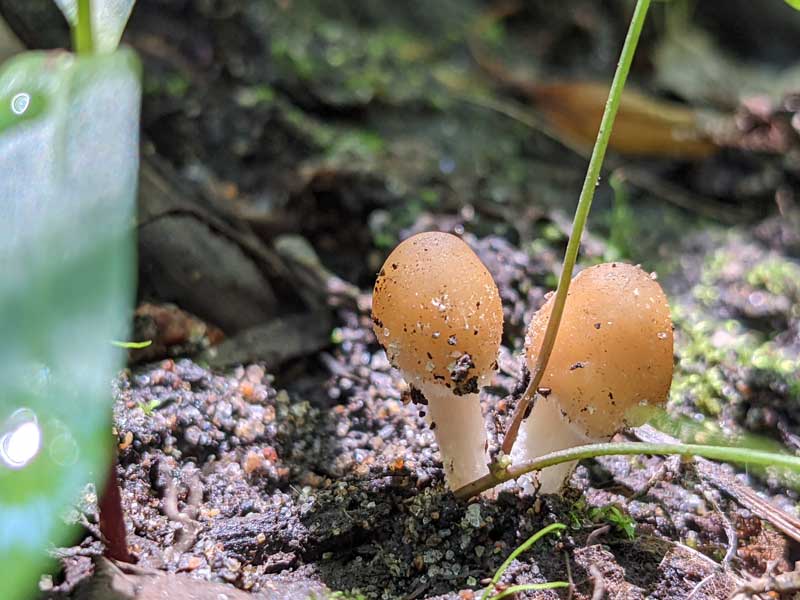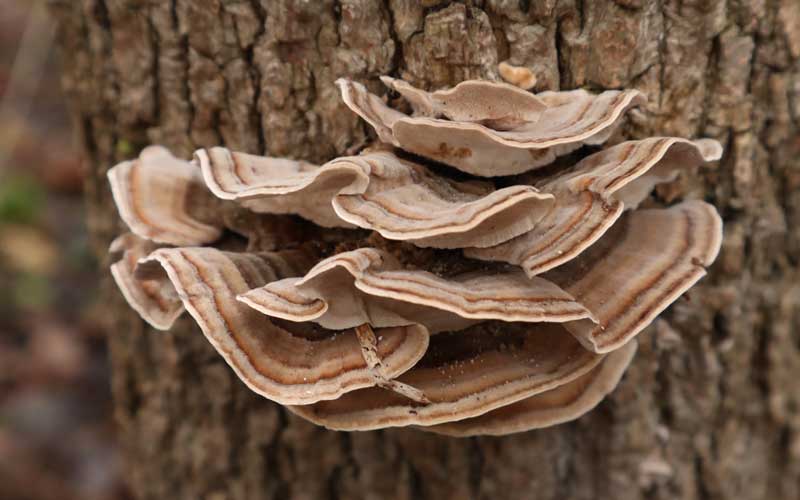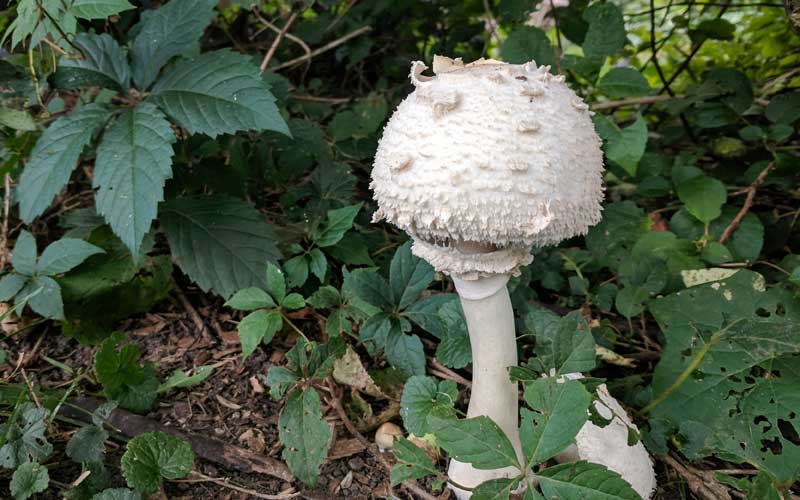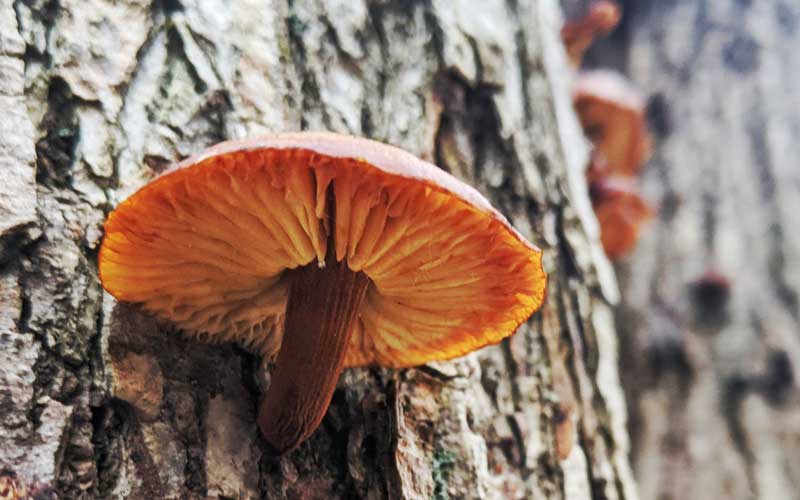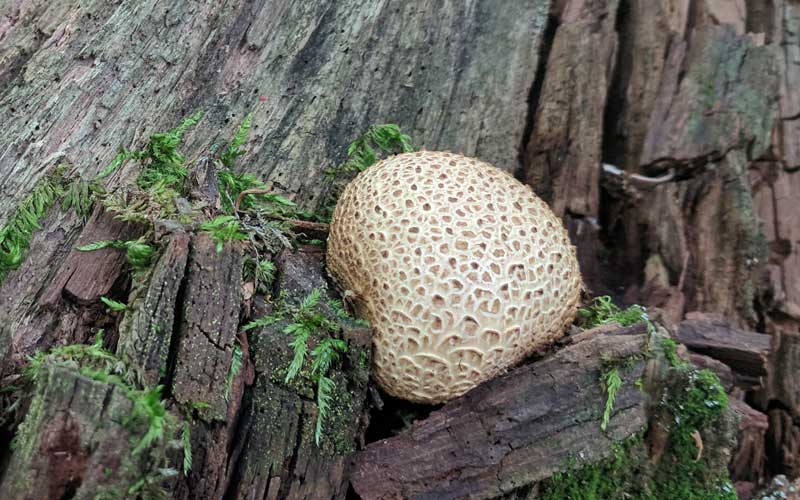- Home
- Mushroom Resources
- Got Questions?
- How is Vegan leather made from mushroom mycelium?
How is Vegan leather made from mushroom mycelium?
by Jan
(NYC)

Vegan leather wallet made from mycelium
QUESTION:
I’m a vegan, so my life revolves a lot around not doing harm to any animals. I eat a Vegan diet, which I love. Of course, my lifestyle also means I don’t wear leather coats, or buy shoes, purses, backpacks or anything else made from leather.
Now I’m hearing friends talk about “leather” that doesn’t come from animals, but is made from mushrooms, or mycelium.
I eat a lot of mushrooms, but haven’t heard about mycelium being used to make leather. Sounds really interesting. What’s the process? How is it made?
And where can I buy some?
ANSWER:
Leather made from mushroom mycelium is a relatively new material that is still in the process of being developed.
And, of course, it isn’t really leather. No dead animals required! But the process does create a material that is very durable, and looks and feels a lot like real leather.
The basic process involves growing mycelium, the vegetative part of a fungus, in a substrate made of agricultural waste, such as corn husks or sawdust. The mycelium consumes the substrate and forms a dense network of fibers, creating a material that has a texture and structure similar to leather.
To make leather from mushroom mycelium, the following steps are typically involved:
1. Cultivating the mycelium: The first step in making mushroom leather is to cultivate the mycelium by growing it in a substrate. This can be done in large tanks or trays in a controlled environment, where the temperature, humidity, and other conditions can be carefully regulated.
2. Harvesting the mycelium: Once the mycelium has grown and formed a dense network of fibers, it can be harvested from the substrate. The mycelium is then cleaned and processed to remove any impurities or unwanted materials.
3. Treating the mycelium: The mycelium can be treated with various chemicals and dyes to achieve the desired color and texture. Some manufacturers also add a layer of natural rubber to the surface of the mycelium to improve its durability and water resistance.
4. Shaping and finishing: Finally, the mycelium can be shaped and finished into various forms, such as sheets or rolls, and used to make a variety of products, such as shoes, bags, and clothing.
Its’s still early days. But it is a promising new approach to creating sustainable, eco-friendly materials that could have a significant impact on the fashion industry and beyond.
In other words, availability is pretty patchy so far!
Nick



